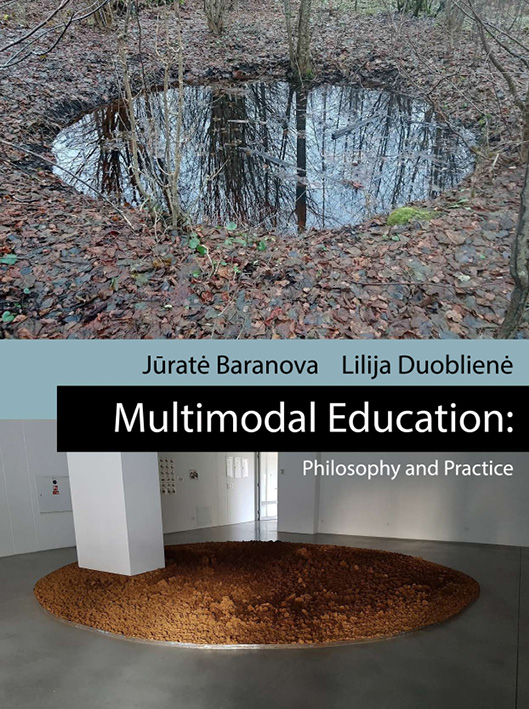Acta Paedagogica Vilnensia ISSN 1392-5016 eISSN 1648-665X
2021, vol. 47, pp. 214–215
Book review
Multimodal Education: Philosophy and Practice,
by Baranova, Jurate and Duobliene, Lilija, Washington:
The Council for Research in Values and Philosophy, 2021, ISBN 1565183495, 9781565183490.
Anckaert Luc
University of Louvain, Belgium

In the international academic reflection on moral education, it has become clear that a purely rational approach is insufficient to foster moral intuitions and attitudes. As early as Aristotle, the importance of habits in ethics had been noted. These habits are not only a rational choice but also acquired through repetition and mimesis. Contemporary authors like Martha Nussbaum also indicate the importance of emotions for moral attitudes. Arts are privileged media for fostering emotions that have a reflective content. This means that the classical Hegelian subordination of the image in favour of the concept is surpassed and that the image is freed from a century long iconoclasm. Moral education is possibly partly a process of learning to think in and with images. In this international context of reflection on moral education, this book by Baranova and Duoblienė, resulting from a broader research project – Premises and Problems of Multimodal Education supported by the Research Council of Lithuania and from their previously published re-search, is a fascinating and inspiring text marked by deep philosophical reflections. It is based on discussions with prominent philosophers as well as on very concrete sources: chosen examples of film and visual material. It innovates not on the basis of the tradition of hermeneutics (which would have been the easy choice) but of the tradition of semiotics and postmodernism/poststructuralism. Important names are, of course, Stiegler, Foucault, Derrida,Barthes, Deleuze and many others. In addition, the choice not to adopt unmediated actual and relevant philosophical insights into multimodal education is very inspiring. A sincere reflection on the sense of education bridges the gap between these two interests. This means that the authors deliver a text which is future oriented both in content and in concept.
The book is divided into different parts, starting from a theoretical reflection on moral education and the use of technology, semiotics (a crucially important chapter), the place of film education in moral education, values and spirituality, multiculturality, the education of children, sound and transversality. The logical structure of the book is complemented by the attention paid to the Eastern cultural atmosphere (for instance a movie of Kim Ki-duk) and the ecological problematic. No doubt the reader of this manuscript receives an important gift. As the result of long research and reflection, the book can become a standard for philosophers and educators.
